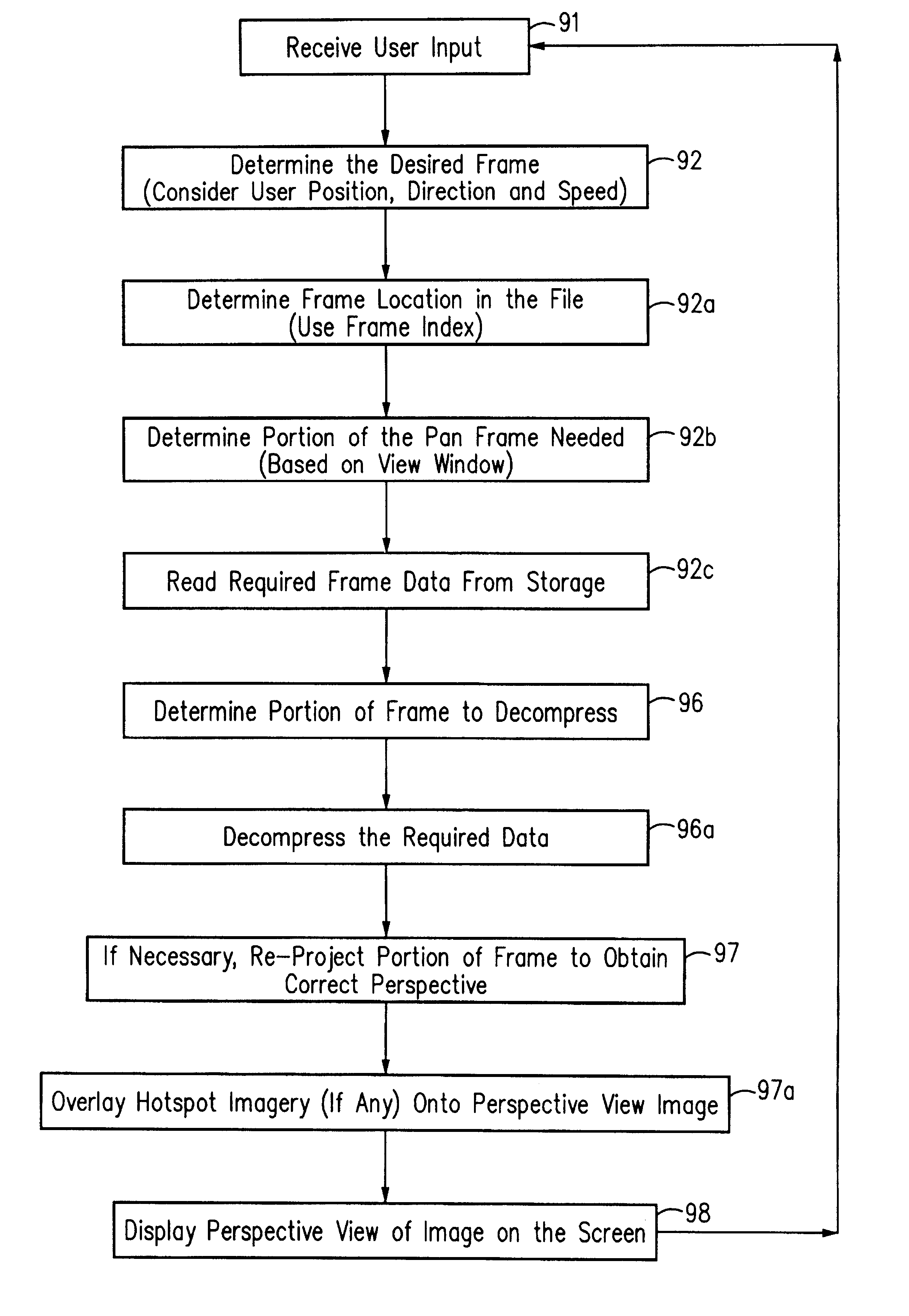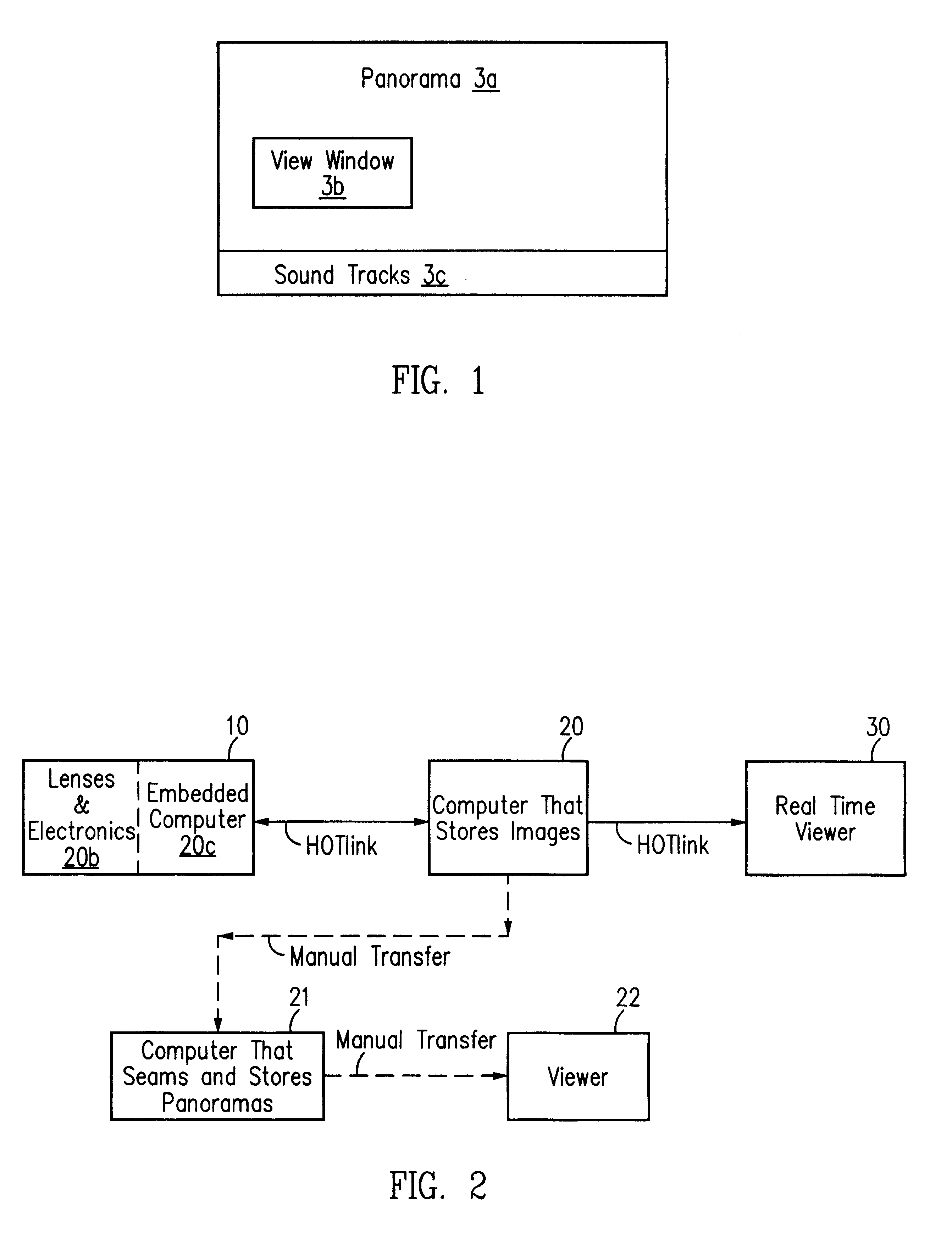Panoramic movie which utilizes a series of captured panoramic images to display movement as observed by a viewer looking in a selected direction
a technology of panoramic images and motion pictures, applied in the field of panoramic movies, can solve the problems of high computational intensity of systems and traditional movies that do not allow viewers to control the portion of images
- Summary
- Abstract
- Description
- Claims
- Application Information
AI Technical Summary
Benefits of technology
Problems solved by technology
Method used
Image
Examples
Embodiment Construction
In order to simulate movement through multi-dimensional space, one must first capture a series of panoramic images, the panoramic images must be stored as frames and then the appropriate view window from selected frames must be displayed in an appropriate sequence.
A panoramic image provides data concerning what is visible in any direction from a particular point in space. At any particular time a viewer or user can only look in one direction. The direction or point of view of a viewer or user determines the "view window", that is, the part of a panoramic image which is projected on a screen at a particular time. FIG. 1 shows a key frame (i.e. a panoramic image) or a panorama 3a. Panorama 3a has a view window 3b which corresponds to a portion of panorama 3a. Panorama 3a also has associated therewith a number of sound tracks 3c. It is noted that for ease and clarity of illustration, no attempt has been made to illustrate in FIG. 3 the well know fact that there is a difference in persp...
PUM
 Login to View More
Login to View More Abstract
Description
Claims
Application Information
 Login to View More
Login to View More - R&D
- Intellectual Property
- Life Sciences
- Materials
- Tech Scout
- Unparalleled Data Quality
- Higher Quality Content
- 60% Fewer Hallucinations
Browse by: Latest US Patents, China's latest patents, Technical Efficacy Thesaurus, Application Domain, Technology Topic, Popular Technical Reports.
© 2025 PatSnap. All rights reserved.Legal|Privacy policy|Modern Slavery Act Transparency Statement|Sitemap|About US| Contact US: help@patsnap.com



